- | 8:00 am
NASA sent a panel engraved with waveforms to Jupiter’s moon. Here’s what the squiggles mean
NASA enlisted designer Debbie Millman to help create a panel for the Europa Clipper mission with a message to connect two planets.
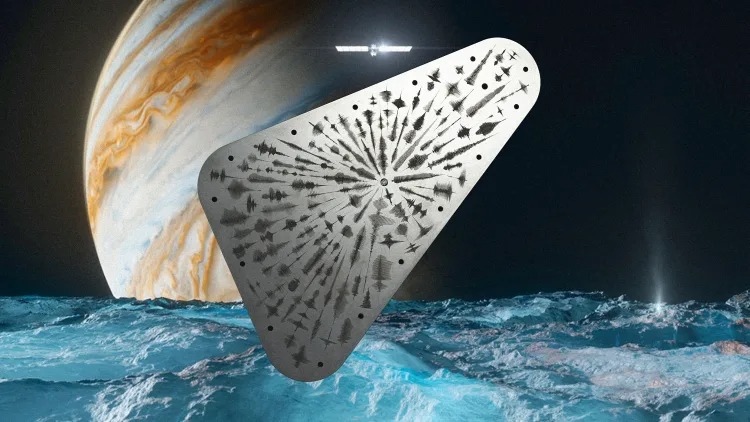
If there’s one thing NASA is inarguably brilliant at, it’s recognizing possibility. And that’s exactly what happened when engineers working on the Europa Clipper spotted a flat, otherwise unremarkable piece of metal protecting some critical electronics of the space probe, and emailed Preston Dyches about it.
Did he and his team want to put something on it?
“It was a blank canvas,” Dyches, who is a Senior Public Engagement Specialist at NASA’s Jet Propulsion Laboratory, detailed in an email exchange. “We thought about what sort of design or message might draw interest from people and create meaningful connections between this space mission and something larger that people everywhere care about.”
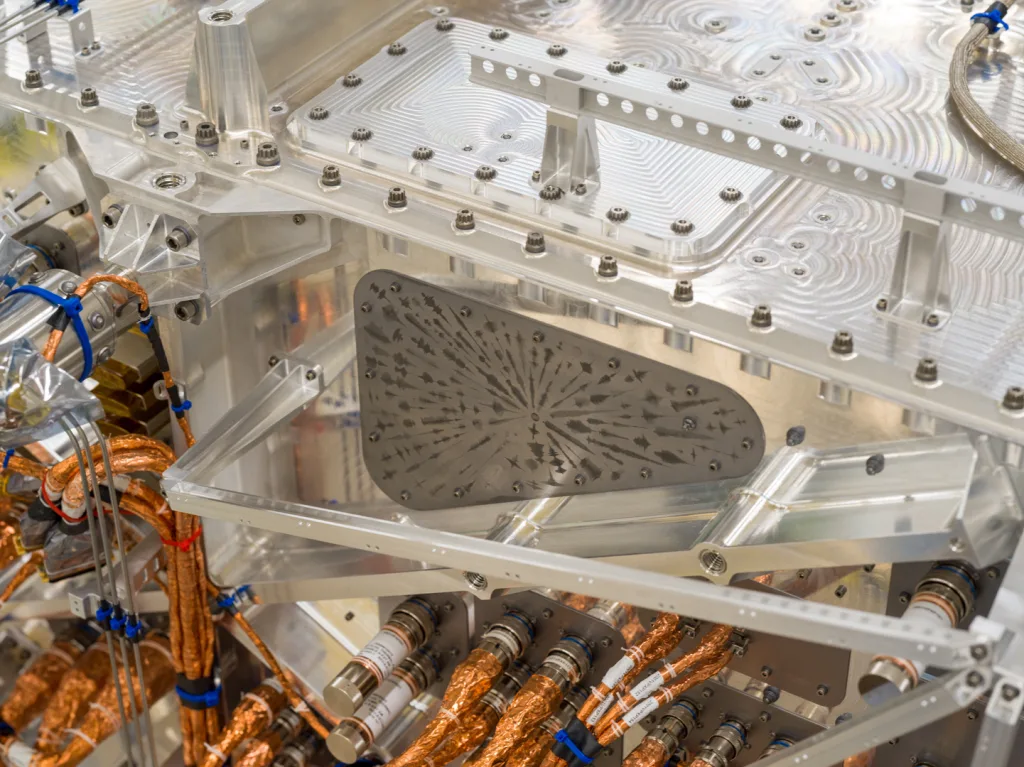
Dyches says that it’s not uncommon for spacecraft to carry special mementos or messages. For instance, the famous Golden Records, which were a time capsule of sounds and images sent aboard the Voyager spacecraft to interstellar space in 1977. Dyches and his team wanted to create another exciting moment with the Europa Clipper.
With the plate, Dyches wanted to create an artistic piece that could give NASA an opportunity to spotlight how interesting the mission is. The Clipper, which launched Oct. 14, is destined to reach Jupiter’s moon Europa in 2030. Europa is believed to contain a hidden ocean—and the Clipper is attempting to determine whether the moon could support life.
Given the mission objective, the team seized on the word water and began to ponder ways to feature it in various languages and visual expressions, drawing a link between the Earth and Europa.
“Water connects these two worlds,” Dyches noted. “One is teeming with life, and the other might just possess the right conditions for some form of life of its own. Since we think liquid water is necessary for life as we know it, and water is also essential for all of us on this planet, it’s maybe the most important molecule in existence. So highlighting this thing that connects us all, even though we may use different names for it, feels important.”
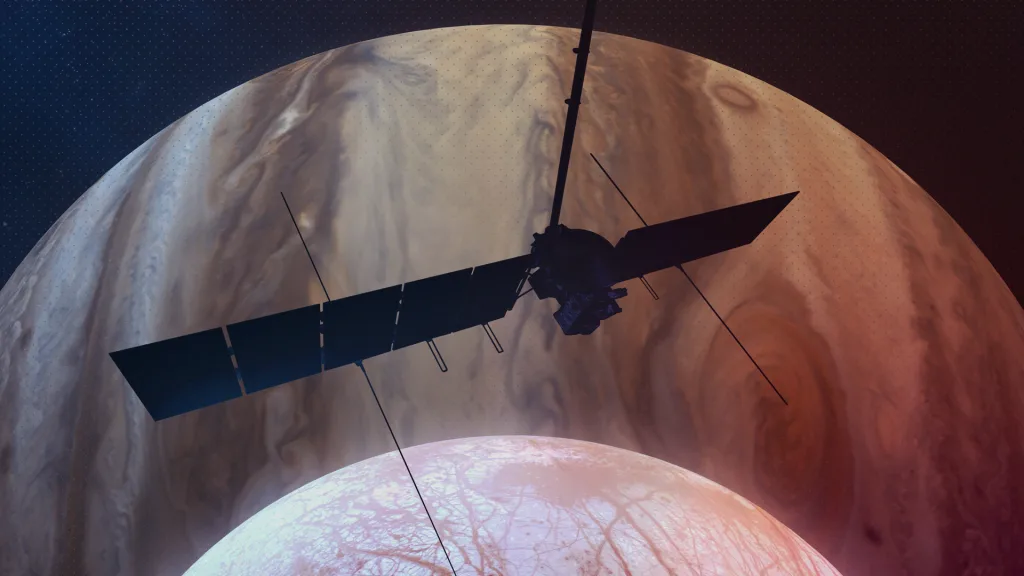
DIVING IN
JPL Visual Strategist Dan Goods reached out to artist and Design Matters host Debbie Millman about collaborating on the project. At first, given Millman’s long history with lettering, he thought she might draw the word water in different languages, or utilize her network to have native speakers of various tongues design the words. And then a linguist working on the project had the idea to visualize waveforms of people saying water in different languages.
From her office at the School of Visual Arts, Millman excitedly pulls up Goods’s original email from Oct. 5, 2021. “When Dan asked me if I’d be interested in doing it, it was never a question. It was like, I’m all in, day one,” she says. “We were all so excited about it. The common denominator was this thrill and joy of the potential of it all.”
Millman, who has been fan of all things space since she was a kid, says the original direction was to create something that feels iconic and draws you in, and also a piece that you’d want to put on your wall. A team of linguists developed a list of 103 languages to feature, and began collecting audio recordings of native speakers saying the word, as Goods worked to transform them into waveforms.
Millman, meanwhile, developed three concepts. The first was the waveforms in a spiral pattern, representing a galaxy. The problem was when she began manipulating the curves, she realized the integrity of the audio could be lost.
The second concept was to visualize the forms as ocean waves—not entirely unlike Peter Saville’s famous Unknown Pleasures cover. Ultimately, she says it just felt too derivative and not a perfect fit.
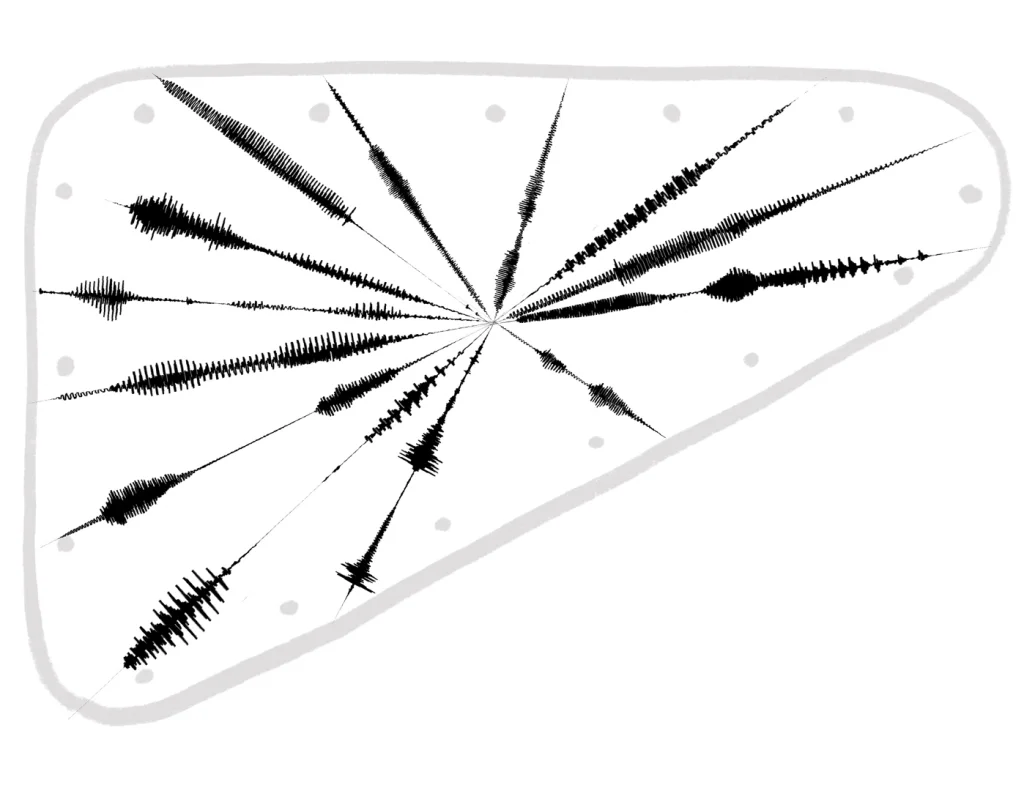
The third, however, hit the mark: a riff on the Big Bang, featuring the word emanating out in multiple languages from a core that represents the ASL sign for water. Since the waveforms were on straight planes in this direction, Millman says they could be stretched or narrowed with no impact on the word (they would just read as faster or slower).
“The last thing we wanted was for somebody to test this and for it to not be right,” Millman says. “Everything had to be scientifically accurate.”
Though the panel is relatively small at roughly 7 x 11 inches, making it—and getting 103 languages onto it—was no small task. Millman worked in Procreate to create balance and harmony in the design, labeling each layer with its corresponding language, eventually rearranging them all alphabetically to be able to track them more easily. As the project neared completion, she realized in the 11th hour that a set of critical planned languages had accidentally been omitted—and rearranged again.
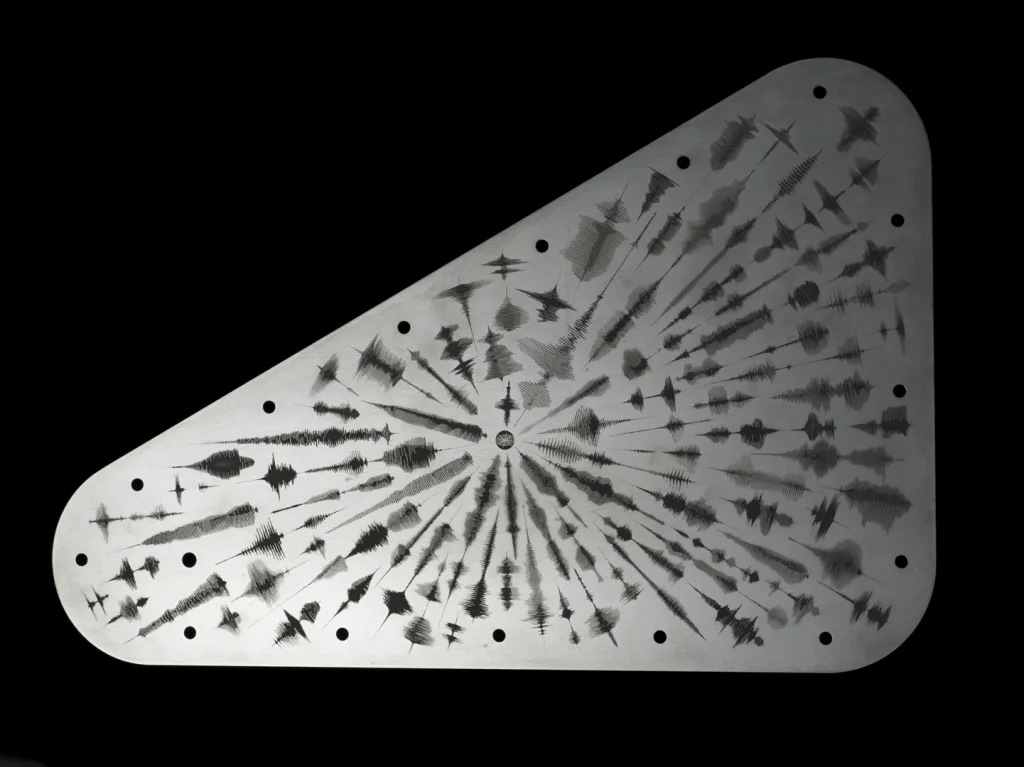
MESSAGE IN A BOTTLE
The opposite side of the plate was developed in parallel by NASA Creative Director David Rager and JPL designer Kaelyn Richards, and was originally a separate project from the Millman side (dubbed “Water Words”). It contains a smattering of thoughtful Easter eggs—as well as an original piece by U.S. Poet Laureate Ada Limón, in her own handwriting.
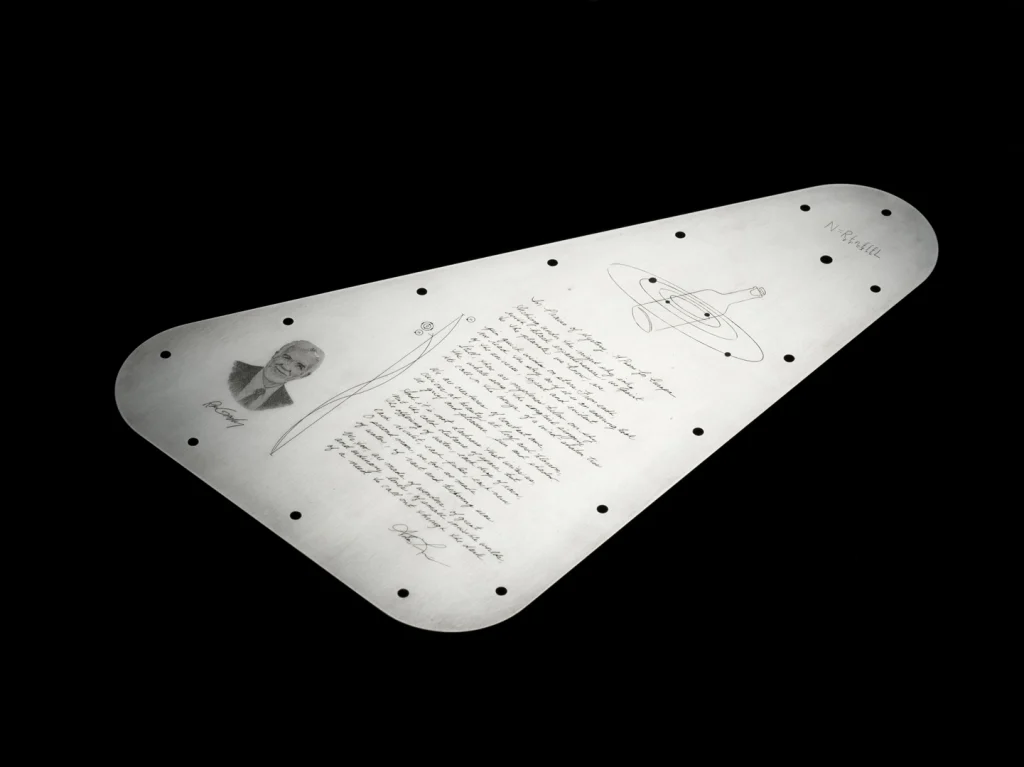
“It’s beautiful and complex and calls out for connection. That’s just like space exploration, and is really what it’s all about,” Dyches noted.
Above the poem, an illustration of a bottle floating in the cosmos contains a microchip with 2.6 million names submitted by the public during an engagement campaign prior to launch. Elsewhere, there’s the famous Drake Equation, which offers a model of thought on the possibility of extraterrestrial life in the Milky Way, written in astronomer Frank Drake’s hand. On the bottom left is an image of the late Ron Greeley, who worked on NASA’s Galileo mission to Jupiter and championed a voyage to Europa.
Ultimately, on the cosmic scale, it’s a tiny panel. But it represents incredible possibility.
“It is special to be part of the creation of an object that will travel to another world,” Goods says. “The fact that we got to collaborate with people all over the Earth on something that represents a cross section of humanity and tying it into our existence and our search for life elsewhere has been absolutely fulfilling.”





































